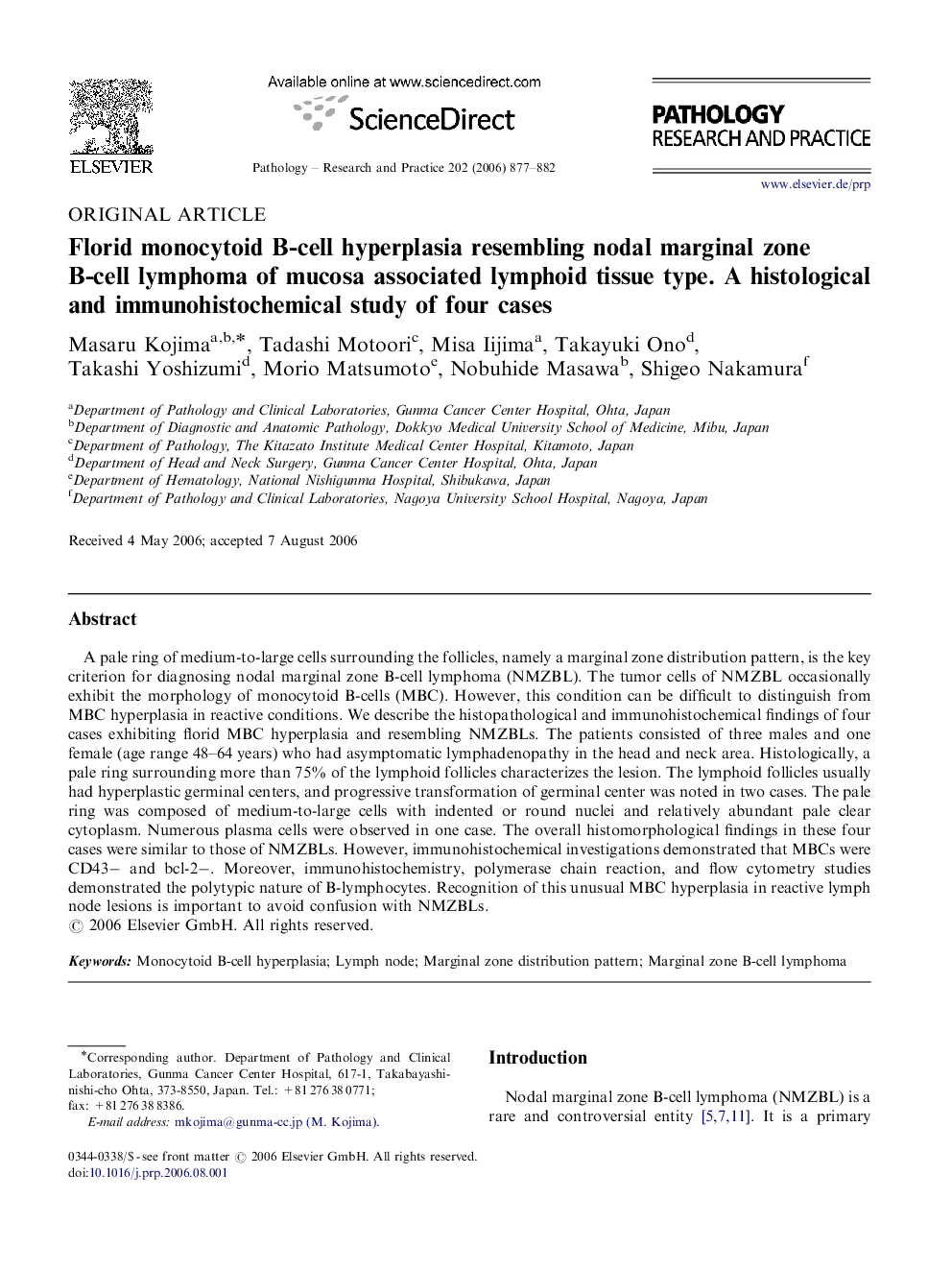| Article ID | Journal | Published Year | Pages | File Type |
|---|---|---|---|---|
| 2156513 | Pathology - Research and Practice | 2006 | 6 Pages |
A pale ring of medium-to-large cells surrounding the follicles, namely a marginal zone distribution pattern, is the key criterion for diagnosing nodal marginal zone B-cell lymphoma (NMZBL). The tumor cells of NMZBL occasionally exhibit the morphology of monocytoid B-cells (MBC). However, this condition can be difficult to distinguish from MBC hyperplasia in reactive conditions. We describe the histopathological and immunohistochemical findings of four cases exhibiting florid MBC hyperplasia and resembling NMZBLs. The patients consisted of three males and one female (age range 48–64 years) who had asymptomatic lymphadenopathy in the head and neck area. Histologically, a pale ring surrounding more than 75% of the lymphoid follicles characterizes the lesion. The lymphoid follicles usually had hyperplastic germinal centers, and progressive transformation of germinal center was noted in two cases. The pale ring was composed of medium-to-large cells with indented or round nuclei and relatively abundant pale clear cytoplasm. Numerous plasma cells were observed in one case. The overall histomorphological findings in these four cases were similar to those of NMZBLs. However, immunohistochemical investigations demonstrated that MBCs were CD43− and bcl-2−. Moreover, immunohistochemistry, polymerase chain reaction, and flow cytometry studies demonstrated the polytypic nature of B-lymphocytes. Recognition of this unusual MBC hyperplasia in reactive lymph node lesions is important to avoid confusion with NMZBLs.
